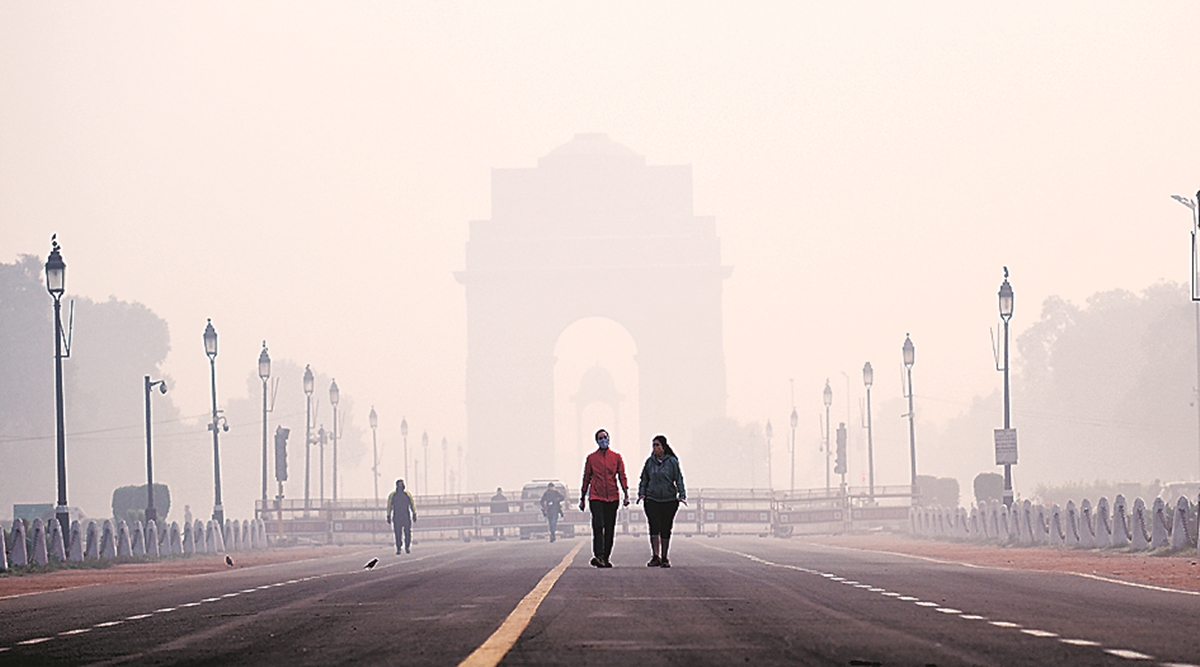 The average concentration of PM 2.5 in Delhi in 2020 was 84.1 µg/m3, the highest among the capital cities of 92 countries mentioned in the report. (Express photo: Abhinav Saha)
The average concentration of PM 2.5 in Delhi in 2020 was 84.1 µg/m3, the highest among the capital cities of 92 countries mentioned in the report. (Express photo: Abhinav Saha) Delhi has been ranked as the world’s most polluted capital in a new report that placed India as having the third worst air quality out of 106 countries in 2020.
The World Air Quality report by Swiss technology company IQAir, released on Tuesday, mentions that 22 of the top 30 most polluted cities globally are in India. “Despite widespread air quality improvements during 2019-20, air pollution in India is still dangerously high. India continues to dominate annual PM 2.5 rankings by city,” the report said.
“Major sources of India’s air pollution include transportation, biomass burning for cooking, electricity generation, industry, construction, waste burning, and episodic agricultural burning,” it added. Data for the ranking was derived from ground-based government and private monitoring stations and only PM 2.5 pollutant levels were evaluated.
PM 2.5 refers to the ambient airborne particles of size 2.5 micrometres that are emitted from various sources and are linked to negative health effects such as cardiovascular disease, respiratory illness and premature mortality, the report states. “Delhi, the world’s second most populous city, is located southeast of India’s agricultural breadbasket, where open burning is common. It is estimated that as much as 20% to 40% of Delhi’s air pollution originates from Punjab farm fires. During peak burning season, Delhi experienced average PM 2.5 levels of 144 µg/m3 in November and 157 µg/m3 in December, exceeding the WHO’s annual exposure guideline by more than 14 times,” the report states. The annual exposure limit of PM2.5 set by WHO is 10 µg/m3, lower than 40 µg/m3 set under the Indian National Ambient Air Quality Standards.
The average concentration of PM 2.5 in Delhi in 2020 was 84.1 µg/m3, the highest among the capital cities of 92 countries mentioned in the report. Delhi was followed by Dhaka and Ulaanbaatar in Mongolia. Within South Asia, Indian cities of Ghaziabad, Bulandshahr, Bisrakh Jalalpur, Bhiwadi and Noida were cited as the top five most polluted regional cities, all of which are part of the National Capital Region.
“India, Iran, and Nepal are still the only South Asian countries with domestic government monitoring networks reporting real-time data to the public… Given the severity of air pollution within this region, more real-time monitoring is needed to enable more people to respond and protect their health,” the report states.